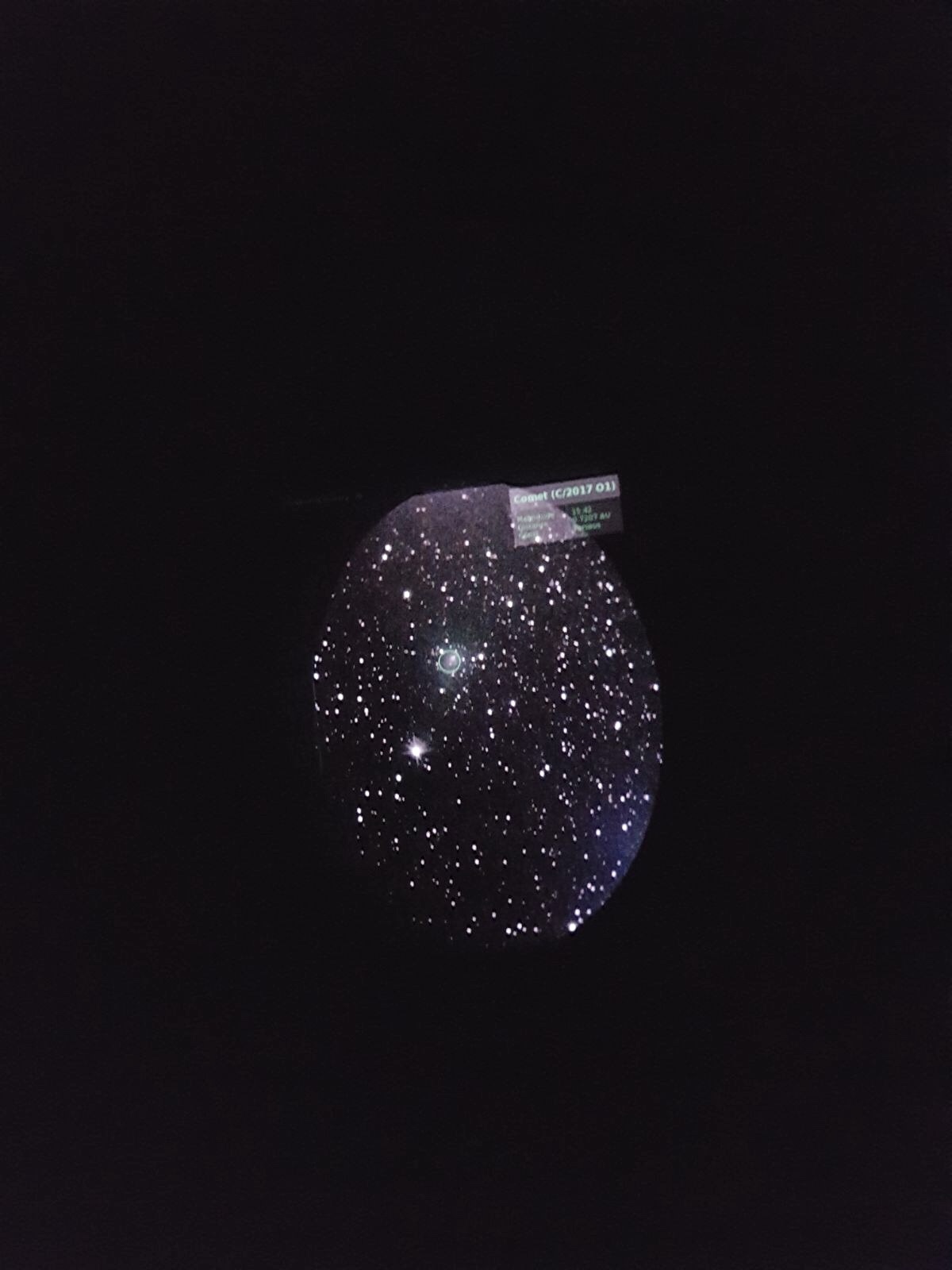You’ve probably heard of C/2017 O1, a long-period comet that’s now paying what may well be its first-ever visit to the inner solar system. Earlier this month we decided to check it out using our eVscope prototype.
The All Sky Automated Survey for Supernovae (ASAS-SN) system discovered Comet O1 ASAS-SN (now officially named C/2017 O1) on July 19, 2017, when it was in the constellation Cetus and had only a faint 15.3 magnitude. Even at that dim magnitude, however, an eVscope pointed at this area of the sky could have detected it. A few days later, however, as it came closer to the sun and its activity increased, the comet shot up one hundred fold in brightness to magnitude 10.
Our prototype eVscope spotted the object from Aubagne, France on October 16 as the comet was moving from the Perseus to the Camelopardalis constellations. Using our Automatic Field Detection to identify the FOV, we found the target in just five minutes!
Based on data from the JPL Horizons Ephemeris system, we expected the comet’s integrated magnitude to be about 12.1, although several observers reported a magnitude of 9-10.

Quick Astrophotography picture of the comet 2017O1 made by combining images (~8 min) acquired with the eVscope prototype at Aubagne, France.
Interestingly, recent observations of this comet show that it is still active and its brightness has not changed. It’s possible the object was caught in an outburst. If that’s the case, professional and amateur astronomers should continue to monitor this icy body to better understand what’s going on. This is the kind of scientific research that we’ll be able to do far more conveniently and precisely by combining observations from a global array of eVscopes.
As mentioned, this is probably the first visit this long-period comet has ever made to the inner solar system. As more all-sky surveys become available (Pan-STARRS, ASASSN, Black-Gems, to name just three), we can be sure that we’ll detect more comets like this in the future. And that means more targets to study and enjoy with your eVscope!



